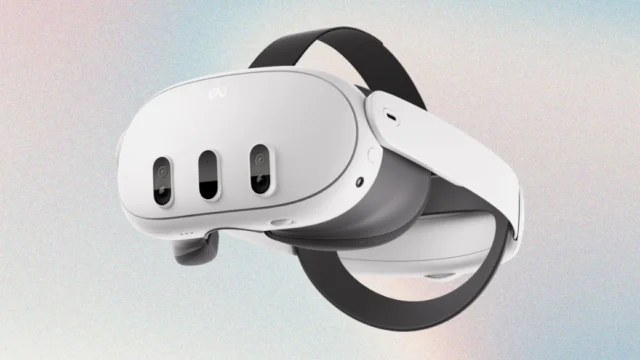
The recent release of the Meta Quest 3 mixed reality headset has been met with much anticipation and curiosity. As with any new tech product, enthusiasts and experts alike are eager to see what lies beneath the surface. iFixit, known for their detailed teardowns of electronic devices, recently took the Quest 3 under their microscope, revealing some intriguing insights.
Key Highlights:
- The Quest 3’s design allows for easier battery replacement compared to its predecessor, the Quest 2.
- There’s a possibility of weight reduction by swapping the Quest 3 battery with that of the Quest 2.
- Questions arise regarding the joystick’s mechanism and potential issues related to stick drift.
- The teardown did not provide close-ups of the PCB and cooling mechanisms or chip descriptions.
Inside the Quest 3: A Closer Look
The teardown process began with the removal of the cover around the lenses, followed by the extraction of several screws to access the battery. Interestingly, not all screws seemed necessary for removal. The front cover appeared to be held in place by just six screws and could be pried off with some effort. Once inside, the cables needed to be unplugged, and the mainboard removed to access the battery. Compared to the battery replacement process of the Quest 2, the Quest 3 seems to offer a more straightforward approach.
Joystick Mechanism: A Point of Concern?
One of the concerns raised during the teardown was the mechanism behind the joysticks. The Quest 2 had faced issues related to stick drift, and there’s hope that the Quest 3 has addressed this problem. However, the teardown video did not provide a clear view of the joystick’s main board, leaving some questions unanswered.
Battery Insights: Weight and Compatibility
The battery, a significant contributor to the headset’s weight, became a topic of discussion. Some users wondered about the feasibility of replacing the Quest 3’s battery with the Quest 2’s, hoping for potential weight reduction. Others contemplated the idea of better weight distribution by using an external power bank.
Unanswered Questions:
While the teardown provided a glimpse into the Quest 3’s internals, it left some stones unturned. There were no close-ups of the PCB and cooling mechanisms, and chip descriptions were missing. Such details are crucial for tech enthusiasts and experts who wish to understand the device’s intricacies fully.
Summary:
The Meta Quest 3 teardown by iFixit offered valuable insights into the headset’s design and components. While the device seems to have improved in terms of battery replacement ease, questions remain regarding the joystick mechanism and other internal components. As the VR industry continues to evolve, such teardowns become essential in understanding the direction in which technology is headed and the innovations that lie ahead.








